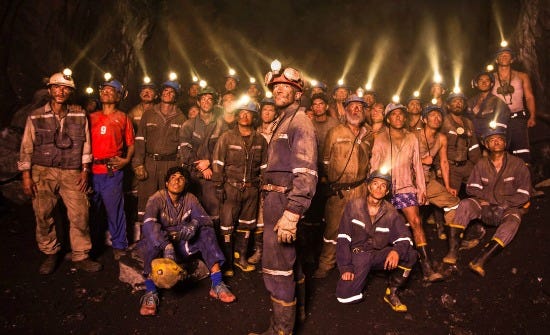The 33

“The 33” is one of those movies that delivers everything you expect, does it well and suffers no surprises. The true tale of the 2010 Chilean mining disaster that left 33 men trapped thousands of feet underground in a gold mine, it’s uplifting, humanistic and harrowing (though not too much).
Directed by Patricia Riggen (“Girl in Progress”) with a screenplay by Mikko Alanne, Craig Borten and Michael Thomas, based on a book by Hector Tobar, the film goes for verisimilitude as we alternate between being buried deep in the mine with the workers or scrambling with the rescuers and family members on the surface striving to free them.
Of course, we know that all the men got out safely after an incredible 69 days trapped underground. This was a huge international story at the time, and even if it weren’t, we’re told from the outset that 33 men were trapped, so if some of them died the title would’ve reflected a lower number. (And, most likely, this movie wouldn’t exist.)
What makes it a great story is that normally all of the miners would’ve perished, but miraculously every one of them made it out alive.
Antonio Banderas plays Mario Sepúlveda, the unofficial leader of the trapped miners. He’s a wise man who recognizes that the greatest danger they face is not the lack of food and water but each other. He carefully rations their meals and breaks up fights before they happen, counseling patience even as others edge up to wigging out.
If the presence of a Spanish actor playing a Chilean bothers you, then you should know the cast is a mishmash of actors of different ethnic backgrounds. Lou Diamond Phillips, who is Scotch-Irish, Cherokee and Filipino, plays the foreman, Luis, who tortures himself over the inadequate safety protections in place in the mine. Other performers are of Mexican, Cuban, Brazilian or other Latino heritage.
There are also some lily-white actors such as Bob Gunton, who plays the Chilean president, and Gabriel Byrne, a pale Irishman who portrays the chief engineer overseeing the rescue. Though Chile is more racially diverse than most Americans realize, with roughly half the DNA being of European origin, or so says Wikipedia.
Obviously, you can’t have 33 characters competing for screen time, so the filmmakers focus on a half-dozen or so, with Mario being the first among equals. The other “focus” miners break down into familiar archetypes: the old guy who’s already filed his retirement papers; the young guy who’s about to have a baby; the new guy who’s not from around here and gets heckled for it; the wayward guy battling addiction; the philanderer who’s got a wife and mistress fighting over him on the surface; the religious fellow who offers the others comfort; the Elvis admirer with the outsize personality and temper; and so on.
Up top the families, mostly women, caterwaul and demand action. Juliette Binoche, despite being estranged from her brother (the addict), becomes the de facto leader aboveground just as Mario is the authority figure below. Rodrigo Santoro plays the young government minister sent to talk soothingly and hold hands, but actually tries to make a difference.
The heart of the movie, of course, is what it’s like to be trapped deep in a mine with little hope for survival, slowly wasting away as fears eat into your mind. It’s powerful stuff, with Banderas showing how emotionally accessible he is as an actor.
The best scene is a shared dream/delusion as the men consume the last of their food, as each hallucinates being presented with some bodacious meal by his loved ones. The darkness recedes, it’s all light and joy, as each miner sits at a long table like a recreation of the Last Supper with Jesus and his apostles.
(Though, I am pained to point out, the actors don’t appear to have starved themselves very much for the movie. For a bunch of guys supposedly wasting away, they’re a rather fleshy bunch. I think fat Elvis actually got fatter. Though I guess if you’re going to do that sort of thing you need to either go Full Bale or not bother, and they chose the latter.)
It’s a terrific bit of imagination, both inside the miners’ heads and on the part of those telling the story. “The 33” could’ve done with more of this, but instead sticks to the safe path.



